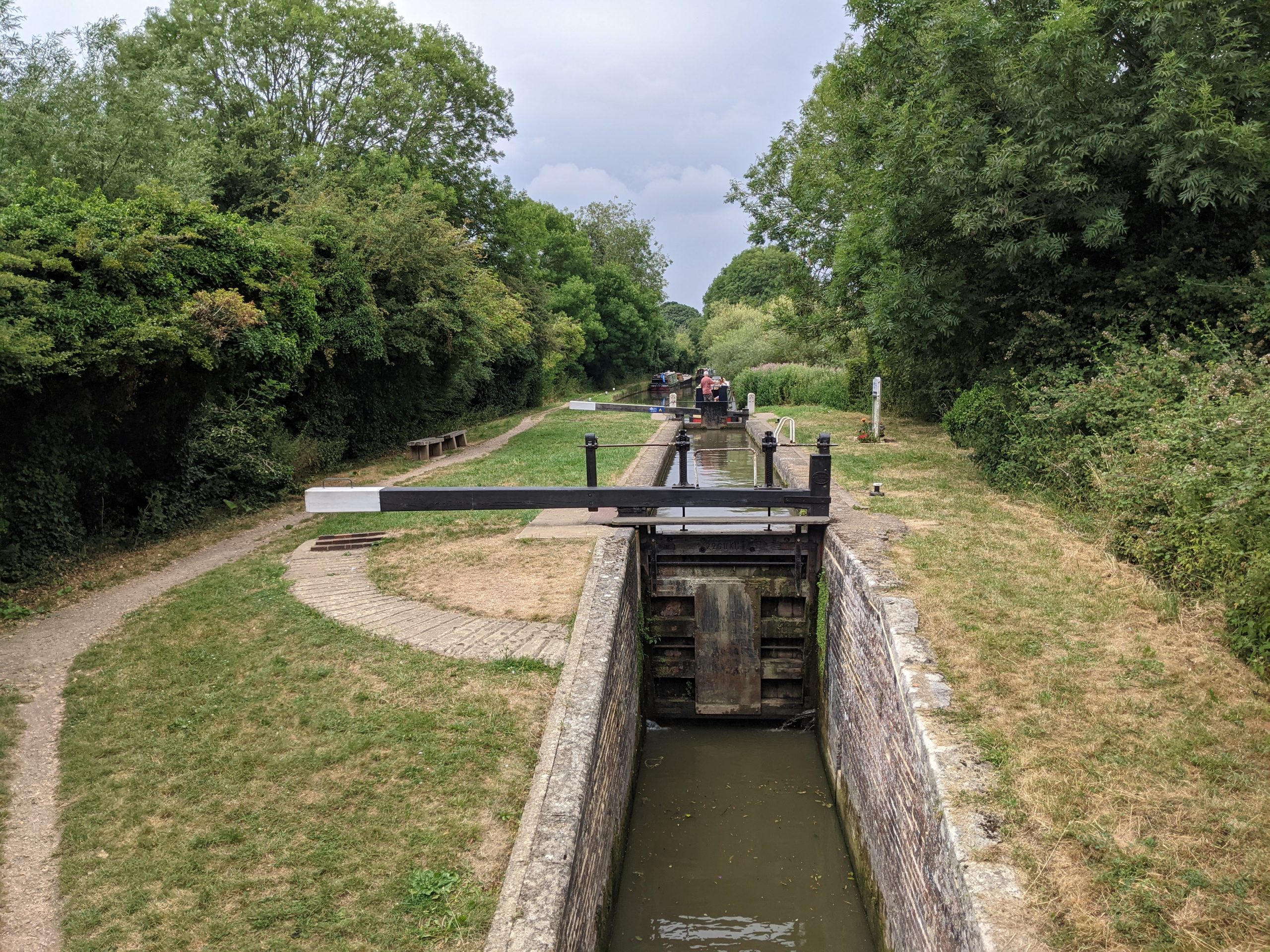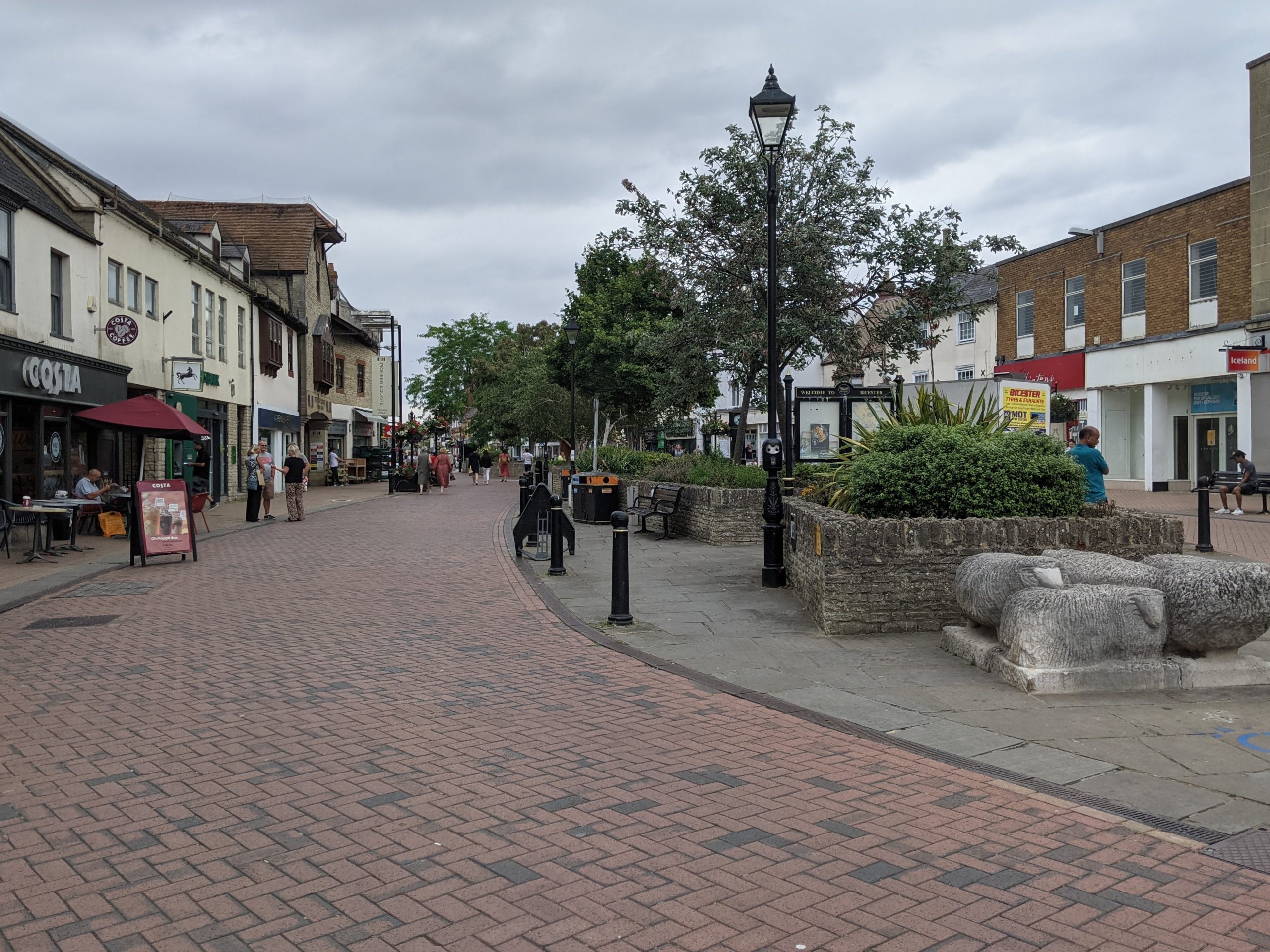Place
Why is GBI important for place in Cherwell?
Sense of place along the Oxford Canal corridor

GBI can make an important contribution to improving the quality and sense of place – sometimes called ‘placemaking’. This includes both regeneration initiatives and the contributions GBI can make to the local economy, such as tourism activities.
Placemaking is about improving the public space in a settlement through an understanding of what makes a local community unique. It should take into account how people use their existing public spaces and what improvements the community would most benefit from.
The Covid-19 pandemic accelerated historic trends in the decline of the traditional high street and town centres generally. There has been substantial growth in online shopping and home working patterns leading to the closure of shops and re-purposing of office space. Against this backdrop, a GBI-led approach to placemaking is becoming an increasingly attractive option when reconsidering the changing role and function of urban areas.
Heritage features are a key part of any GBI network (see interactive map) and make important contributions to sense of place. They help to tell the story of a place, the landscape that surrounds it and how land use has shifted over time.
Investing in nature recovery – and in particular in “nature-based solutions” – can also help to boost local and regional economies. It can create more jobs and economic value than alternatives, while also enhancing long-term resilience.
GBI should respond to an area’s character so that it contributes to the conservation, enhancement and/or restoration of landscapes. It can also create new high-quality landscape to which local people feel connected.
Planning for GBI plays an important part in the placemaking process and in achieving a higher and more consistent quality of place (see Guidance for new Development for more detail).
What does national policy say?
The 2020 report of the UK’s Building Better, Building Beautiful Commission “advocates a radical programme for the greening of our towns and cities, for achieving environmental targets, and for regenerating abandoned places”. It notes that the “emerging environmental goals – durability, adaptability, biodiversity – are continuous with the pursuit of beauty”.
The National Design Guide outlines ten characteristics that create a well-designed place. One of these emphasises the importance of the provision of a network of high quality, green open spaces with a variety of landscapes and activities, including play.
In terms of job creation, a 2021 report on Valuing Nature by the Centre for Ecology and Hydrology (CEH) and Bournemouth University sets out the clear benefits of nature restoration for economic growth and job creation. The research showed that many local businesses rely on having a healthy and attractive local environment. This includes not only tourism, recreation and agriculture, but other businesses such as manufacturing and construction, which require clean water, natural materials and a hazard-free environment.
Finally, the Building with Nature standard is the UK’s first green infrastructure benchmark. It defines ‘what good looks like’, with a simple, easy-to-use framework that takes into account 12 Standards built around themes of Core, Wellbeing, Water and Wildlife.
What does sub-regional policy say?
The emerging Ox-Cam Local Natural Capital Plan is committed to creating a locally owned and co-designed strategic place-based plan that provides a mechanism to prioritise environmental improvements, ensure effective coordination of planning and delivery and stimulate investment.
In terms of the wider landscape setting for Cherwell’s settlements, Oxfordshire’s Wildlife & Landscape Study (OWLS) further investigates local landscape character and their role in shaping the County’s wider ‘sense of place’. This includes river meadowlands along blue corridors, wooded estate lands north of Bicester and rolling village pastures in the north west of the District.
What does local policy say?
Cherwell’s existing Local Plan sets out multiple policies on local landscape and historic environment protection, GBI and the Oxford Canal. Development is expected to respect and enhance local landscape character and the GBI network.
Several parts of Cherwell’s existing evidence base highlight the role of GBI in the broader placemaking agenda within several of the key settlements. There is a significant focus on green and blue corridors as part of placemaking.
In Banbury, for example, there is a long-term objective of seeking to establish a series of open spaces based on the Oxford Canal and River Cherwell linked by public footpaths/cycleways. Similarly, parks linked by green routes are proposed for Bicester, alongside the establishment of a community woodland.
The GBI interventions in key settlements are supported by a suite of masterplan documents, which set out minimum standards to be achieved by new development.
- The Kidlington Masterplan SPD (2016) has a strong focus on landscape setting, access to green space and highlights the role of the canal and river corridors as recreational assets.
- The Masterplan SPD for North West Bicester (2016) is also based on a landscape framework and highlights natural corridors focused on existing watercourses and stream corridors.
- The Banbury Vision and Masterplan SPD (2016) in turn focuses on the Oxford canal being ‘opened up’ as a new green lung through the town.
Outside these settlements, the Oxford Canal is highlighted as a key heritage feature that is central to the District’s wider ‘sense of place’. The pastoral landscape of the Cherwell valley was once a vital transport route and the District’s blue corridors form an important part of the historic environment and sense of place.
The 2012 Conservation Area Appraisal for the Oxford Canal highlights that it is one of the most popular leisure canals in the country, passing through beautiful countryside, and the tow path is well used by cyclists and hikers.
What are the challenges and key pressures in Cherwell?
Public realm and planters in Bicester town centre

Car-dominated public realm around Banbury station

As growth comes forward within and around Cherwell’s settlements, it will be vital that quality of place is maintained. It is also important that these are nature-rich places.
When it comes to residential areas, a UK-wide design quality audit carried out by Place Alliance in 2020 found that, across the country, new development scored poorly on character and sense of place – particularly on greenfield sites. In summary, the UK is often failing to establish a positive new character for development.
In the context of the audit, Cherwell lies between the ‘South East’ region (where design quality is relatively higher) and the ‘East Midlands’ region (where there is a lower incidence of high-quality design and significantly higher incidence of ‘poor’ design quality).
The dominance of the private car across Cherwell poses a significant challenge to the delivery of nature-rich, high-quality places. According to the 2011 Census, 85% of households in Cherwell have one or more cars.
Multi-functional ‘blue corridors’ should be a key focus for placemaking through the District but are often under-used assets. Stakeholders engaged for this Strategy urged that river and canal corridors should be seen as an opportunity rather than a barrier, but highlighted concerns over maintenance – including waterlogging of footpaths after heavy rain.
In terms of town centres, Cherwell’s Town Centre and Retail Study (2021) highlights that the pandemic has resulted in lasting habitual change related to shopping and subsequent retail closures. Against this backdrop, a GBI-led approach to placemaking is becoming an increasingly attractive option when reconsidering the changing role and function of urban areas.
This adapted approach is likely to focus beyond retail and look to residential, leisure, education and community uses – all of which can benefit from a more GBI-led focus.
Place: Summary of key issues
Projected growth: Unless carefully planned and designed, increased growth within Cherwell could reduce the District’s distinctiveness.
Movement patterns: The dominance of the private car poses a challenge to high quality, nature-rich placemaking.
Under-performing blue corridors: Corridors like the Oxford Canal, are currently under-performing in terms of people, nature and place, and should sit at the heart of the District’s sense of place.
Wider health of town centres: As with the rest of the UK, the Covid 19 pandemic exacerbated town centre issues, such as the increase in online shopping. A GBI-led focus can sit at the heart of more diversified post-Covid town centres.